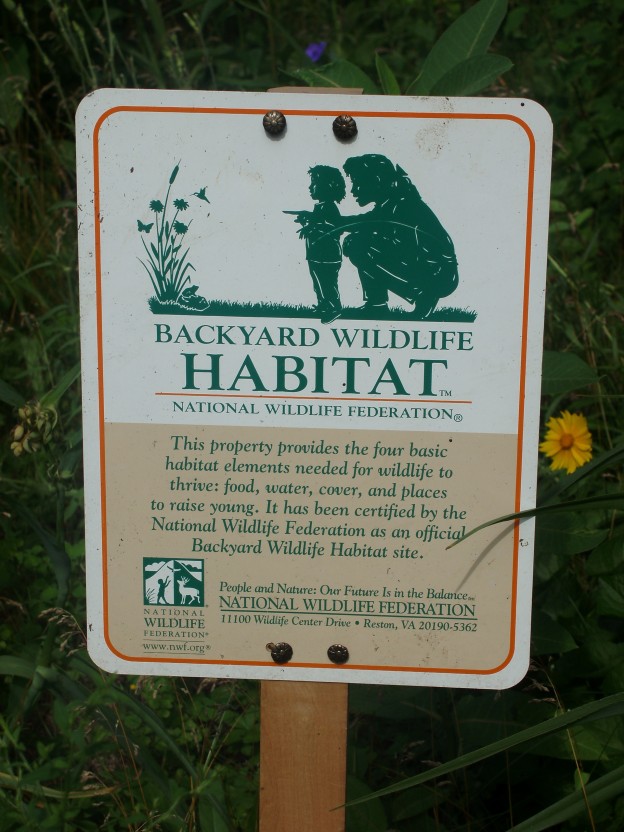 Most suburban landscapes are made up of lush green grass, ornamental shrubs and maybe some trees. To encourage birds to visit, homeowners may hang a birdfeeder or two in the middle of the yard. To humans, the scene may look like a welcome mat for the natural world, but to native wildlife this typical suburban landscape is as a barren as a desert. A robin may land on the lawn, or a butterfly may flit by, but that’s the extent of what can survive on this suburban landscape.
Most suburban landscapes are made up of lush green grass, ornamental shrubs and maybe some trees. To encourage birds to visit, homeowners may hang a birdfeeder or two in the middle of the yard. To humans, the scene may look like a welcome mat for the natural world, but to native wildlife this typical suburban landscape is as a barren as a desert. A robin may land on the lawn, or a butterfly may flit by, but that’s the extent of what can survive on this suburban landscape.
In order to encourage wildlife in your backyard, you need more than a green lawn and a birdfeeder. According to the National Wildlife Federation’s (NWF) Backyard Habitat program — which has certified more than 106,000 backyard wildlife habitats nationwide since 1973 — there are five critical elements needed to encourage native wildlife to visit your yard: food, water, nesting materials, places to raise young and sustainable gardening practices. If you have all five elements in your backyard, you can even be eligible for certification as an official NWF Backyard Habitat (see link at the end of this post).
Food
Birdfeeders are great, but they are not enough since birds survive primarily on eating insects. Encouraging insects to hang around your yard you need native plants — which will provide the leaves, pollen, nuts and berries to the native species of insects. Depending on where in the country you live will determine which plants are native to your eco-region. If you are worried about having too many insects once you plant natives, don’t: the birds and carnivorous insects, such as ladybugs, will move into your insect paradise and create a natural order of checks and balances.
Water
Animals need clean water to drink and, for some, to bathe (such as birds). Other animals, such as frogs and other amphibians, need water to live in and breed. But you don’t need to install an expensive pond or elaborate wetland to satisfy this criterion: a simple birdbath or a shallow pan filled with clean water will do.
Cover for Nesting and Hiding
Animals feel vulnerable in open areas, and that’s why they rarely visit in a typical suburban lawn. So allow some of your yard to “go natural.” If the untidiness of this bothers you, you can mow up next to this naturalized area to make it look intentional. Your front yard can certainly be more formal with beds of native plants and flowers. Put out roosting boxes, bird or b at houses to provide shelter and nesting areas for wildlife.
at houses to provide shelter and nesting areas for wildlife.
Sustainable Gardening Practices
Remember you are creating a “home” for birds, mammals, plants and insects that visit your yard. So avoid using any chemicals that can harm the natural balance of this ecosystem you have created: Avoid using pesticides and herbicides and use mulching to keep water in the soil. Remember, the more “naturalized” areas in your yard, the less need for watering, mowing and maintenance of lawn areas.

